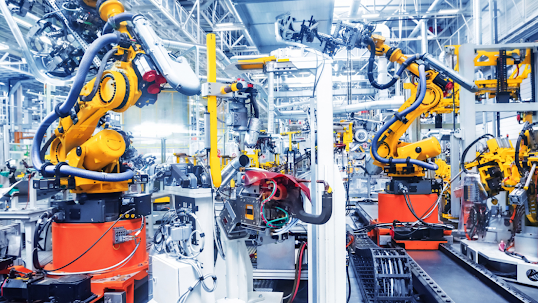In the rapidly evolving landscape of modern industry, a transformative force is reshaping the way businesses operate and produce goods – industrial automation. This groundbreaking technology is not just a buzzword; it represents a seismic shift in the way we approach manufacturing, production, and beyond. In this comprehensive exploration, we'll unravel the layers of industrial automation, understand its significance, and delve into its far-reaching implications.
I. The Essence of Industrial Automation:
At its core, industrial automation refers to the use of control systems such as computers or robots for handling different processes and machinery in an industry to replace human intervention. The primary goal is to optimize efficiency, enhance productivity, and ultimately streamline the entire production cycle. From automotive assembly lines to food processing plants, the applications of industrial automation are as diverse as the industries it touches.
II. The Evolution of Industrial Automation:
To comprehend the profound impact of industrial automation, it's essential to trace its evolution. The roots of automation can be traced back to the early 20th century, with the advent of the assembly line. However, the real turning point came with the introduction of programmable logic controllers (PLCs) in the 1960s, marking the beginning of a new era in industrial control systems.
III. Key Components of Industrial Automation:
To demystify industrial automation, let's break down its key components:
Sensors and Actuators:
- Sensors collect data from the environment.
- Actuators execute the desired actions based on the data received.
Programmable Logic Controllers (PLCs):
- The brain of industrial automation, PLCs are specialized computers that control the machinery and processes.
Human-Machine Interface (HMI):
- The interface through which human operators interact with the automation system.
Supervisory Control and Data Acquisition (SCADA) Systems:
- SCADA systems monitor and control the industrial processes, providing real-time data and insights.
IV. Applications Across Industries:
The versatility of industrial automation is evident in its widespread applications across various sectors:
Manufacturing:
- Automation has revolutionized manufacturing, from mass production in automotive plants to precision in electronics assembly.
Energy:
- In the energy sector, automation plays a crucial role in optimizing power generation, distribution, and consumption.
Healthcare:
- Automation is transforming healthcare with robotic surgery, automated pharmacies, and smart medical devices.
Agriculture:
- Precision farming and automated machinery are increasing efficiency and yields in agriculture.
V. Advantages of Industrial Automation:
The adoption of industrial automation brings forth a myriad of benefits for businesses and society at large:
Increased Productivity:
- Automation reduces production time, minimizes errors, and ensures consistent output.
Cost Efficiency:
- Though the initial investment can be significant, the long-term cost savings through reduced labor and enhanced efficiency are substantial.
Enhanced Safety:
- Dangerous and repetitive tasks can be assigned to automated systems, minimizing the risk to human workers.
Quality Improvement:
- Automation ensures precision and consistency, leading to higher product quality.
VI. Challenges and Considerations:
While the advantages are evident, industrial automation is not without its challenges. Issues such as job displacement, initial setup costs, and the need for skilled personnel must be carefully addressed. Striking a balance between automation and human involvement is crucial to harness the full potential of this technology without compromising on social and ethical considerations.
VII. The Future of Industrial Automation:
As we stand at the cusp of a new era, the future of industrial automation promises even greater advancements. Technologies like artificial intelligence (AI), machine learning, and the Internet of Things (IoT) are converging to create intelligent, adaptive systems that can redefine the way industries operate. The concept of Industry 4.0, characterized by the integration of smart technologies into industrial processes, is a testament to this ongoing evolution.
Conclusion:
In conclusion, industrial automation is not just a technological marvel; it's a catalyst for transformative change across industries. As we navigate the complexities of this automated future, it is crucial to approach it with a holistic perspective, considering both the advantages and challenges. The journey towards a more automated world is not just about machines; it's about redefining the way we work, produce, and innovate. Industrial automation is not merely a trend; it's a revolution that has the potential to reshape the very fabric of our industrial society.

